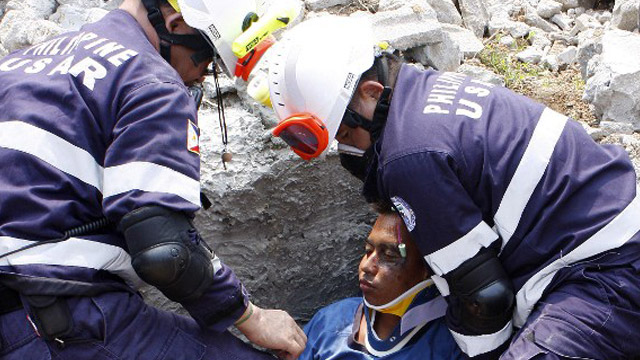SUMMARY
This is AI generated summarization, which may have errors. For context, always refer to the full article.

MANILA, Philippines – Imagine the worst that can happen when an earthquake strikes.
After seeing the destruction caused by a 7.2-magnitude quake in Bohol, it’s easy and scary to imagine the extent of destruction that a major tremor caused by a movement of the West Valley Fault in Metro Manila could bring.
On Aug 26, 2003, a tabletop simulation exercise was held, with a script in mind — based on projected damage. The script envisioned a strong quake that causes a major power outage, collapsed houses, buildings, cellular and phone networks, damaged hospitals, and impassable roads, among others. It is a dreadful nightmare, as relief, recovery and rehabilitation can take years.
According to a 2012 Facebook post of Dr Jerry Velasquez, chief of advocacy and outreach, and regional coordinator of the United Nations (UN) International Strategy for Disaster Reduction, the script was taken from the Metropolitan Manila Earthquake Impact Reduction Study (MMEIRS) final report, and was developed by Lynn Paladio-Melosantos of the Philippine Institute of Volcanology and Seismology.
The 2004 MMEIRS study was conducted to have plans and strategies in place, should there be a strong earthquake that rocks the metropolis.
Velasquez highlights the major findings of the study in his Facebook post. Among others, he emphasizes the following:
- The biggest threat to Metro Manila is the Valley Fault System, also known as the Marikina Fault
- Damage estimate is 40% of residential buildings in Metro Manila, with 34,000 dead and 114,000 injured
- Schools will bear the brunt of the damage, followed by hospitals and fire stations
- High occurrence of building collapse will happen in the Western Marikina City, Eastern Pasig City, Quezon City, and Pasig areas

We obtained permission from Velasquez to embed his post on our site to remind us about the importance of disseminating information that could bring about better disaster preparedness and management. After the Bohol quake, it seems timely to review past studies like the MMEIRS. See below. – Rappler.com
Add a comment
How does this make you feel?
There are no comments yet. Add your comment to start the conversation.